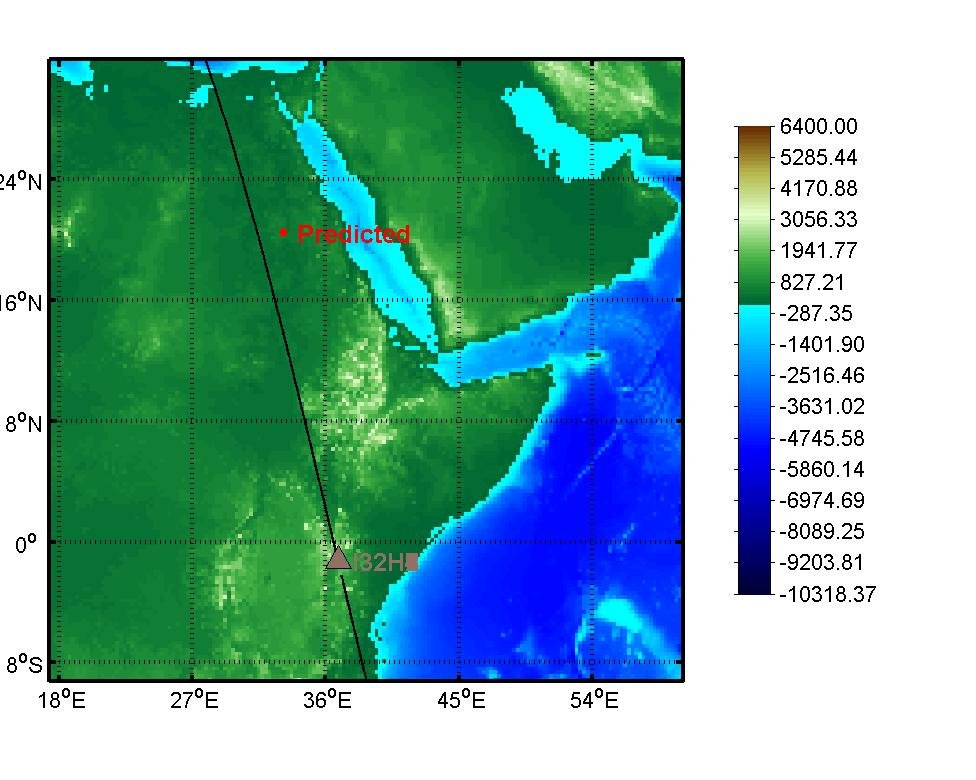
Projected on an infrared satellite-image of Meteosat-7 of 0300 UTC, indicated the position of the plane (+) and the predicted impact area in Sudan (0)."

Image credit: Peter Brown, University of Western Ontario
ASTEROID IMPACT--UPDATE: Asteroid 2008 TC3 hit Earth this morning, Oct. 7th, and exploded in the atmosphere over northern Sudan. An infrasound array in Kenya recorded the impact. Dr. Peter Brown of the University of Western Ontario has inspected the data and he estimates that the asteroid hit at 0243 UTC with an energy between 1.1 and 2.1 kilotons of TNT. Most of the 3-meter-wide space rock should have been vaporized in the atmosphere with only small pieces reaching the ground as meteorites.
No pictures of the fireball have been submitted; the impact occurred in a remote area with few and possibly no onlookers capable of recording the event. So far, the only report of a visual sighting comes from Jacob Kuiper, General Aviation meteorologist at the National Weather Service in the Netherlands:
"Half an hour before the predicted impact of asteroid 2008 TC3, I informed an official of Air-France-KLM at Amsterdam airport about the possibility that crews of their airliners in the vicinity of impact would have a chance to see a fireball. And it was a success! I have received confirmation that a KLM airliner, roughly 750 nautical miles southwest of the predicted atmospheric impact position, has observed a short flash just before the expected impact time 0246 UTC. Because of the distance it was not a very large phenomenon, but still a confirmation that some bright meteor has been seen in the predicted direction. Projected on an infrared satellite-image of Meteosat-7 of 0300 UTC, I have indicated the position of the plane (+) and the predicted impact area in Sudan (0)."
2008 TC3 was discovered on Oct. 6th by astronomers using the Mt. Lemmon telescope in Arizona as part of the NASA-funded Catalina Sky Survey for near-Earth objects. Asteroids the size of 2008 TC3 hit Earth 5 to 10 times a year, but this is the first time one has been discovered before it hit.
pre-impact images: from Paolo Beltrame of CAST Astronomical Observatory, Talmassons, Italy; from Eric Allen of Observatoire du Cegep de Trois-Rivieres, Champlain, Québec; from Ernesto Guido et al. of Remanzacco Observatory, Italy; from S.Korotkiy and T.Kryachko of Kazan State University Astrotel observatory, Russia;
Link: SpaceWeather.com

No comments:
Post a Comment